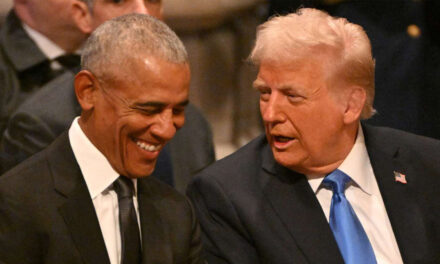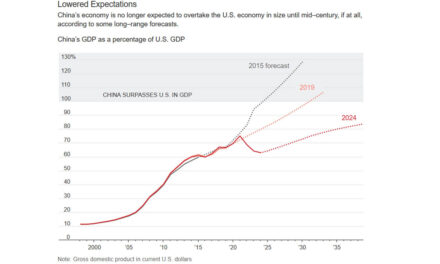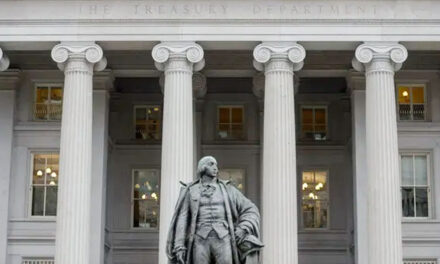
Trump Admin Plans New Nuclear Weapons
With on-going threats from North Korea, paired with China and Russia’s growing military capabilities, President Donald Trump promised to enhance our nuclear weapon arsenal and the overall U.S. nuclear strategy.
This has inspired somewhat of a debate in Washington. The Pentagon believes that there is no better time to enhance the U.S. nuclear forces, while critics believe it will encourage other countries to do the same and will lower the threshold for testing these weapons and ultimately, risk a nuclear war.
The Huffington Post published an alleged unclassified draft of the upcoming U.S. nuclear strategy last week, which was dismissed by the Pentagon as “pre-decisional.” A source privy to the plan told Reuters that the draft obtained was authentic, but didn’t say if it was the final document presented to the president.
“While the United States has continued to reduce the number and salience of nuclear weapons, others, including Russia and China, have moved in the opposite direction,” said the alleged draft in defense of the plan. “The United States must be capable of developing and deploying new capabilities, if necessary, to deter, assure, achieve U.S. objectives if deterrence fails, and hedge against uncertainty.”
“The Nuclear Posture Review has not been completed and will ultimately be reviewed and approved by the President and the Secretary of Defense,” said the Pentagon in a statement.
A year ago, Trump commissioned the Pentagon’s Nuclear Posture Review to reassess the U.S. nuclear strategy and weaponry.
The plan will likely include the development of new nuclear weapons.
“One weapon, which experts say could be deployed in about two years, is a “low yield” warhead for the Trident missile, which currently is deployed with more powerful warheads on the Navy’s submarines that carry ballistic missiles,” writes Wall Street Journal. “The U.S. also would pursue the development of a new nuclear-tipped sea-launched cruise missile, reintroducing a system that was retired from the American arsenal in 2010.”
Russia just developed a new ground-launched cruise missile, which violates the treaty signed between the U.S. and Russia in 1987 that bans intermediate-range missiles based on land.
The “low yield” system will help the U.S. respond better to threats since these weapons will be based at sea where the U.S. doesn’t need permission from other countries to deploy. Sea-based weapons also don’t violate any existing arms-control agreements.
Critics argue that this will only encourage other nations to develop more weapons and deploy them.
“We should be doing everything to reduce the risk that nuclear weapons are going to be used, not expanding the ambiguity of when we might use nuclear weapons,” said Jon Wolfsthal, who was the senior official for arms control under President Barack Obama’s National Security Council to WSJ.
Daryl Kimball, the head of the Arms Control Association, also said that developing more weapons is a dangerous move.
“The use of even a small number of these weapons would be catastrophic,” said Kimball to The Guardian. “Threatening nuclear attack to counter new kinds of ‘asymmetric’ threats is unnecessary, would increase the risk of nuclear weapons use, and would make it easier for other countries to justify excessive roles for nuclear weapons in their policies.”
Proponents of the new nuclear plan claim that are needed as a defensive measure that will make other countries think twice before threatening the U.S.
“This is not about making weapons more usable; this is about strengthening deterrence so that nuclear weapons are not used in the first place,” said Robert Joseph, a senior national security official in under the George W. Bush administration to WSJ. “We have to think what would be credible in Russian eyes.”
The draft is purposely vague about how the U.S. will retaliate to enemies.
“If we are explicit about saying (when) we will not retaliate with the strongest weapons we have, we are implicitly telling our adversaries you can plan for these scenarios more freely,” said Michaela Dodge, senior policy analyst at the Heritage Foundation to Reuters.
The official strategy is expected to be unveiled later this month.
Author’s note: Trump promised to build up our nuclear weapon program and the draft shows that the Pentagon has come up with a clever way of doing so without violating any arms agreements that the U.S. has with other countries. With more powerful weapons at our disposal, the more countries will hesitate before threatening or attacking us.























this needs further investigation. there is a lot here. we need to have open minds looking at this. and I…
PBP emails you? How odd. I understood your English perfectly. Again with the alluding fantasy. I said what I said…
Frank, I did not say you ever sent me an email I said I have saved every single email from…
Frank you and your friends don’t have to worry about Trump. It’s all bullshit. He has no ax to grind…
This article earns a Stop The Spin rating of 1.5, mostly because it spins the effect of liberal minded people…